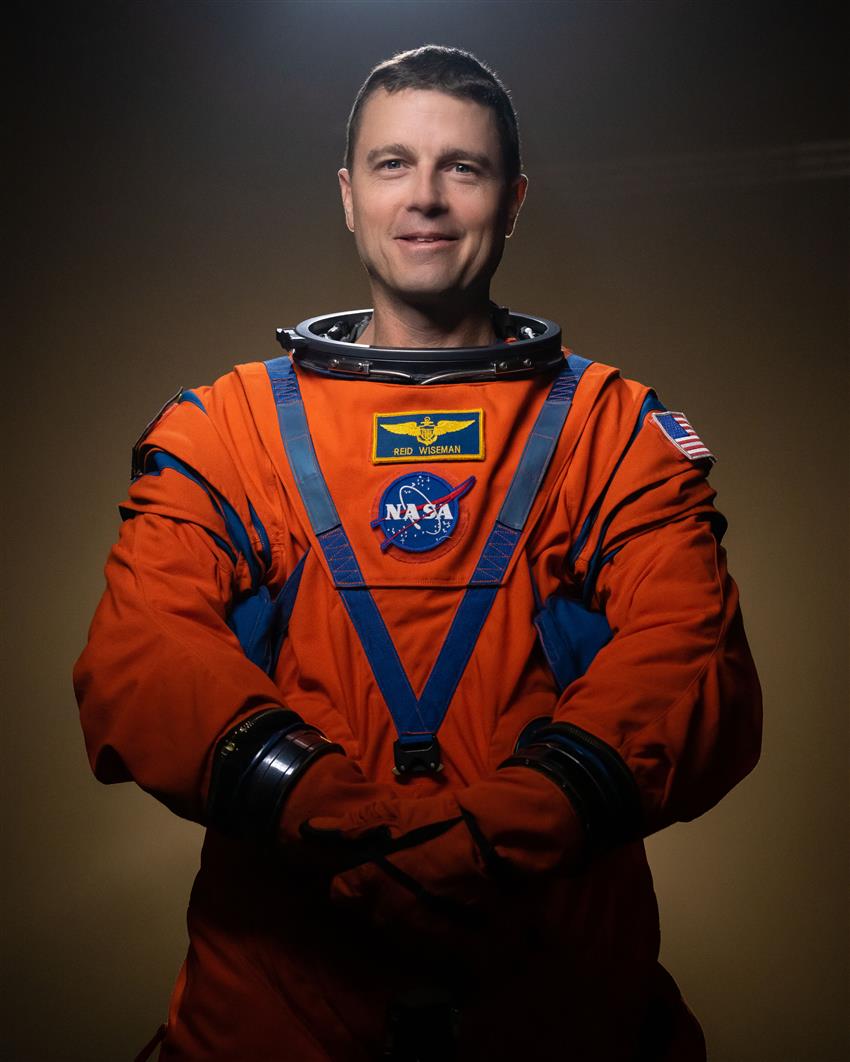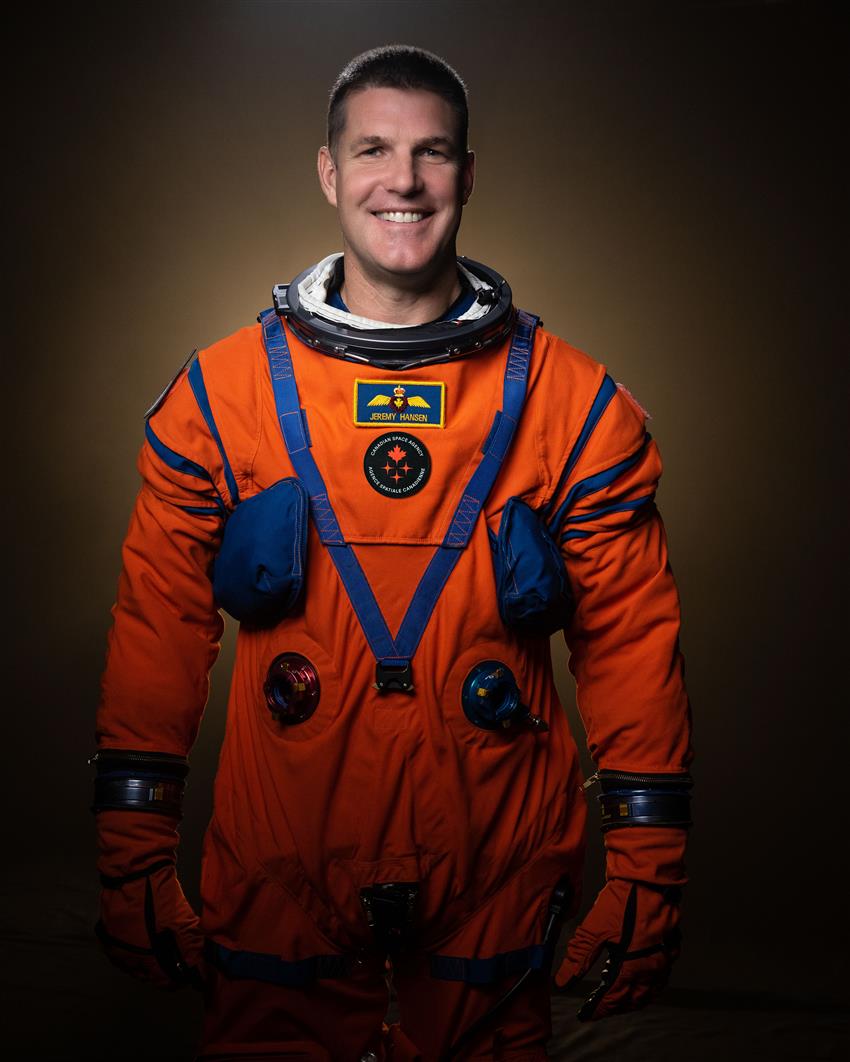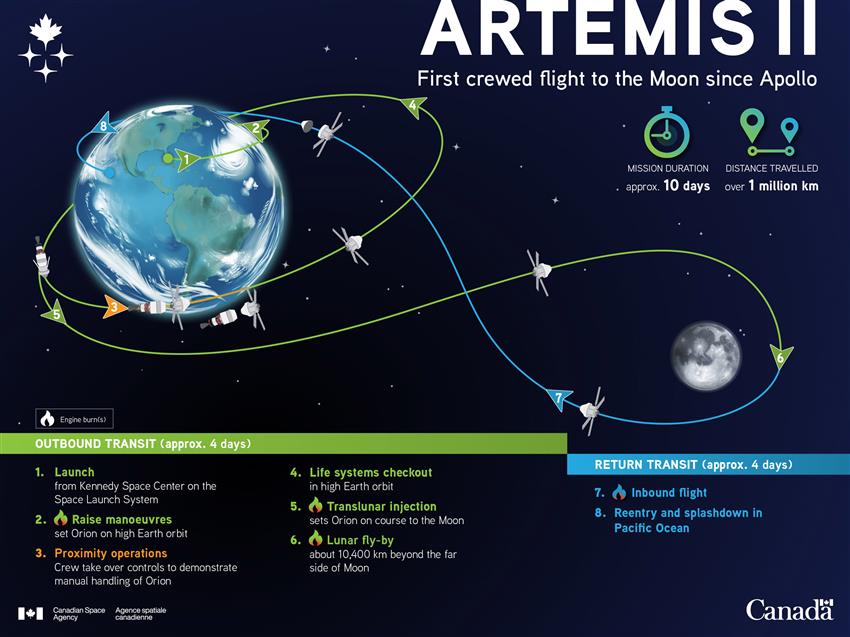The Artemis II mission

Canadian Space Agency (CSA) astronaut Jeremy Hansen will be the first Canadian to ever participate in a lunar mission as part of Artemis II.
- Launch:
- Mission status:
- In development
- Mission duration:
- Approximately 10 days
The Artemis II mission
The historic Artemis II mission is the first crewed test flight of the Artemis campaign, a multi-mission campaign set to create a durable lunar presence and pave the way for human exploration of Mars.
Following the success of the Artemis I uncrewed test flight in , the Artemis II mission will travel around the Moon to ensure that all of the Orion spacecraft's systems work as designed with a crew of four on board. Crewmembers will live and work aboard Orion throughout their journey.
Like the crew of Apollo 8, Artemis II astronauts could witness the "Earthrise," a breathtaking view of our planet suspended in the blackness of space.
CSA astronaut Jeremy Hansen tells the story of how the crew of Apollo 8 captured the famous "Earthrise" photo as they came around the far side of the Moon in . (Credits: CSA, NASA)
Transcript of the video entitled CSA astronaut Jeremy Hansen inspired by "Earthrise"
Artemis II crew
CSA astronaut Jeremy Hansen will travel with NASA astronauts Christina Hammock Koch, Victor Glover and Reid Wiseman.
Artemis II marks the first time a Canadian astronaut will take part in a lunar mission, but it will not be the last. Canada's participation in the Artemis campaign and contribution of Canadarm3 has also secured a future mission to Gateway.
Biographies

Reid Wiseman
(NASA)
Commander
Reid Wiseman is an engineer and decorated U.S. Navy pilot. In , he lived aboard the International Space Station (ISS) for six months, conducting multiple spacewalks and setting a record 82 hours of scientific research done in a single week with his crewmates. He most recently served as NASA's chief astronaut.

Victor Glover
(NASA)
Pilot
Victor Glover is an accomplished test pilot and engineer. In , he served as the pilot and second-in-command of the first operational flight of SpaceX's Crew Dragon. As part of this mission, he lived on the ISS for six months, during which he served as Flight Engineer.

Jeremy Hansen
(CSA)
Mission specialist
Jeremy Hansen is a fighter pilot in the Royal Canadian Air Force. He worked as capcom – the voice between the ground and the ISS – for many years at NASA's Mission Control Center. He is the first Canadian to have led a NASA astronaut class. Artemis II is his first assignment as an astronaut.
Read full bio of Jeremy Hansen
View Jeremy's mission patch

Christina Hammock Koch
(NASA)
Mission specialist
Christina Hammock Koch is an engineer and holds the record for the longest single spaceflight by a woman with a total of 328 days in space. During her stay on the ISS from to , she served as Flight Engineer and participated in the first all-female spacewalk.
CSA astronaut Jenni Gibbons has been assigned as the official backup astronaut for Jeremy Hansen for Artemis II. This assignment secures a seat for a CSA astronaut to fly aboard this historic mission. Backup astronauts are typically trained in a similar way to the prime crew to ensure they are prepared to take on the same duties and responsibilities, sometimes with very little advance notice.
She will also play a key role in defining and validating astronaut training and processes for future lunar missions, and is training to become a lunar capcom.
They get to spend almost 10 days crammed in a tiny capsule together. They respect and trust each other very much, but also have lots of fun preparing for their journey to the Moon. In this vlog, CSA astronaut Jeremy Hansen introduces his fellow Artemis II crewmembers. (Credits: CSA, NASA, Fulwell 73 UK Limited)
Transcript of the video entitled Vlog 10: Get to know my Artemis II crewmates
Artemis II flight path
The Artemis II mission will launch from NASA's Kennedy Space Center, in Florida. The Orion spacecraft will orbit Earth twice to ensure Orion's systems are working as expected while still close to home.

Text version - Artemis II: First crewed flight to the Moon since Apollo
During Artemis II, four astronauts will fly around the Moon in the Orion spacecraft. The approximately 10-day flight test will pave the way for lunar surface missions, including landing the first woman and first person of colour on the Moon. (Credits: CSA, NASA)
During the second orbit high above Earth, a checkout of the spacecraft begins. Crew will perform a sequence of manoeuvres designed to test manual piloting of Orion. The crew will also assess life support, exercise, and habitation equipment to ensure readiness before heading to the Moon.
A powerful engine burn by the European Service Module will set Orion on a four-day outbound course to the Moon. Orion will fly approximately 10,400 km beyond the Moon before completing a lunar flyby and returning to Earth. Orion will splash down in the Pacific Ocean, where the capsule and crew will be recovered by ship.
From Florida to California via… the Moon! In their campervan-size Orion crew module atop the SLS rocket, CSA astronaut Jeremy Hansen and his Artemis II crewmates will launch from Florida. Watch this vlog to hear Jeremy explain the Artemis II trajectory. (Credits: CSA, NASA, Fulwell 73 UK Limited)
Transcript of the video entitled Vlog 14: Over 1,000,000 kilometres in nearly 10 days
Communications and navigation during the Artemis II mission
As with the Artemis II mission, NASA's Near Space Network (NSN) and Deep Space Network (DSN) will be used to track and communicate with the Orion spacecraft during the mission. Communications services allow flight controllers to send commands to the spacecraft and receive data from Orion and SLS systems. Tracking, or navigation, services enable the flight controllers to see where the spacecraft are along their trajectory through space. The NSN and DSN's sensors work together to relay and provide critical flight information.
The Artemis II crew will navigate using the stars to determine the spacecraft's orientation and define the distance between Orion and these bright celestial objects.
As of the Artemis III mission, lidar sensors, which use laser pulses to precisely measure distances, will help Orion with Gateway docking procedures.
